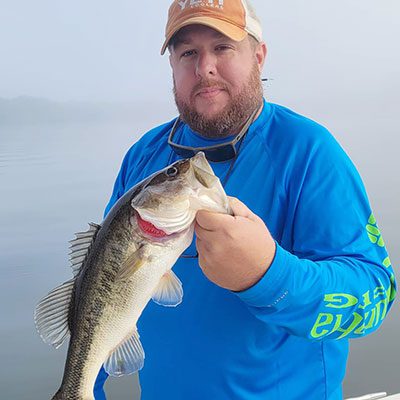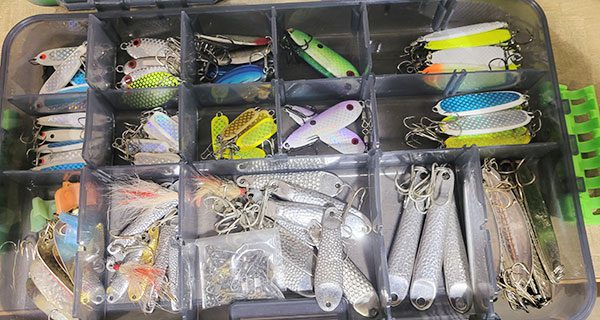Here’s a question for you to ponder: Do bass stop biting a technique, or do we just stop fishing them because they aren’t cool anymore? I’ve had this conversation with several dedicated and good anglers lately. Like most things, it seems that we chase the popular and whatever a YouTube celebrity tells us to fish. We should never confuse that fleeting attention span with the fact that these traditional old-school techniques still produce fish. Matter of fact, in certain times and places, they not only produce fish, but they also dominate.
Over a few articles, we are going to look at some techniques you might have forgotten about, or you might not even know. I am not claiming that these have disappeared completely. In fact, I still see people fishing some of these baits and techniques, but not often.
A couple of weeks ago, I got together with one local guide that I am fortunate enough to call a friend, Jimmy Holmes of Fish On! Guide Service. Jimmy and I were chatting one evening and we got to talking about jigging spoons. I started saying it was a technique I had been trying to learn but was just unable to find a lot of info about it, and how to be successful. Well, Jimmy offered to teach me, and a plan was hatched.

• Tip: With a lot of action in the tip. You want “give” in the tip.
• Line: You really want mono or fluorocarbon line. Mono is perfectly fine here and somewhere between 10 to 14-pound test is good. Braid is just too stiff and has no give in it. You need the give if a big fish hits.
• Reel: This is where Jimmy got me. He uses line counter reels, low profile Okuma line counters to be specific. It’s an affordable reel with good drag, and you can pinpoint where you place the spoon.
• Lures: Berry’s Flex-it spoon (it comes in some tiny sizes for when they are hitting some tiny shad), the Bomber Slab Spoon and the Live Target flutter spoon. Color doesn’t matter as much as size and shape, however, when Oconee and Sinclair get muddy, you might want to have a gold spoon in the box.
• Boat gear: A trolling motor with spot lock is going to make this a much easier to fish technique. You can pay much more attention to your line and lure when you aren’t battling a trolling motor to stay on top of fish.
• Electronics: A basic entry level fish finder will get you on fish these days. Just make sure you KNOW how to use it, what to look for and pay attention.
• Fishing styles for spoons: For our purposes, we are going to focus on only one- a vertical presentation and jigging up and down. You can cast them, and you can power reel these spoons, however, MOST of the time I believe, at Oconee or Sinclair, you are going to drop these spoons to the bottom, or the desired depth, and raise them in short movements. That’s an important part of this. Don’t move these spoons 4 feet. Just watch your rod tip, and on a tight line, raise the spoon a few inches to maybe a foot, and on a tight line, drop it back down. If you spot fish up off the bottom feeding, this is where the depth counter can come in very handy. Just reel up to the depth and go back to jigging. Make sure you get ABOVE the fish though. Stripers and bass orienting like this are not going to feed down.
If you don’t see any fish on the electronics, don’t panic. Make sure you are fishing a location where you have seen and caught fish before, then just drop that spoon to the bottom and bounce it. This will cause commotion and mud to get stirred up, just like a dying baitfish. Bass, hybrids, and stripers all will lay on the bottom and just wait. This commotion will get their attention, and even if you don’t see them on the electronics, you can catch them.
• Time: Traditionally, this has been a dead of summer and dead of winter technique, but really you can catch fish all year on this. I spoke to a tournament angler in the upstate of SC the other day who loves to do this with the herring spawn. The bottom line though is this will work on fish year-round if you try it.
As always, this is a “for what it’s worth” type of deal. I have dedicated some time to learning this and I hope you will give it a try if you aren’t fishing it already!
You can reach James Pressley at jameskpressley@gmail.com
